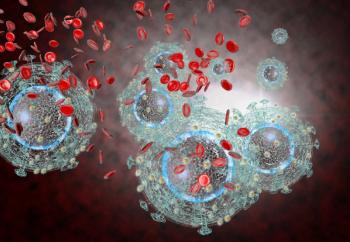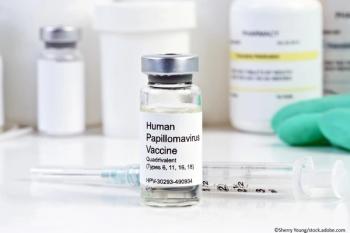
Early ART in Infants: Longitudinal Results and the Mississippi Baby
These presentations provided a wealth of data suggesting that very early treatment of HIV may help control viremia and achieve remission over time in pediatric patients.
Presentation 1: Impact of Early ART on HIV Eradication in Children.*
Presentation 2: Very Early Combination Antiretroviral Therapy in Perinatal HIV Infection: Two Case Studies.**
The topic of HIV reservoirs and eradication was prominent at CROI 2014. In particular, researchers in pediatric HIV discussed the possibility of achieving HIV remission using very early combined antiretroviral therapy (cART) soon after birth.
Katherine Luzuriaga, of the University of Massachusetts Medical School, described longitudinal data that compared the viral burden in infants treated with very early combination antiretroviral therapy (cART) with those treated later in life.
Much of the data comes from the PACTG 56 study, which included 15 children who started cART between 0.5 and 3 months and who received the following regimens: ZDV/3TC/NVP (n=3), ZDV/3TC/NVP/ABV (n=5), d4T/3TC/NVP/NLF (n=7).
Initial results showed:
• Very tight control of viral replication within the first 2 years of life was associated with undetectable plasma HIV RNA and absence of circulating activated CD8 T cells.
• In the first year of treatment, there was a marked drop in proviral DNA, followed by a slower decline during the second year.
• Clearance of HIV-specific antibodies is a hallmark of early viral control, similar to non–HIV-infected infants born to seropositive women.
• HIV-infected infants who began treatment with cART after 12 months of age experienced continued seropositivity and lacked viral suppression.
Longitudinal results from 2 babies who had rapid and tight control of viral replication showed:
• Baby 1 had baseline proviral DNA of 2000 copies/million CD4 T cells, which fell over 2 years to 170 copies/million CD4 T cells. At age 14, the proviral copy number was <10 copies.
• Baby 2 had baseline 2000 copies of proviral DNA/million CD4 T cells, which dropped to 200 copies/million at 1 year of age. At age 14, the proviral DNA had dropped to 17 copies.
• Both babies were antibody-negative.
Data from the Pediatric HIV/AIDS Cohort Study, in which infants started ART at less than 1 year of age, 1 to 5 years, or over 5 years of age, showed:
• Much lower HIV proviral DNA copy numbers in infants who started therapy by 1 year of age, compared with children who started therapy later.
• Longitudinal data from 4 of these children, followed from 2 years of age to between 14 and 18 years of age, showed an approximate 12-fold decrease in proviral DNA levels over time.
Most recent values from all 6 children followed longitudinally show proviral DNA levels <20 copies/mL, significantly lower than children who started treatment later in life. Replication competent virus was not recoverable from 3 of 4 individuals analyzed. Proviral copy numbers were higher in transitional CD4 cells, compared with complement and effector T cells.
Overall, according to Lazuriaga, the data indicated that starting treatment early results in very rapid control of viral replication, limits HIV proviral DNA replication-competent reservoirs, and leads to continued decay and suppression of HIV replication over time. All this seems to suggest that early cART can limit infection of long-lived immune cells, hence encouraging remission.
Case Studies
In a related presentation, Deborah Persaud, of The Johns Hopkins University School of Medicine, described the most recent follow-up data for 2 babies who had started cART very early in life.
Case 1. The first case describes the now famous Mississippi Child-perhaps the first case of HIV remission after very early ART initiation. The Mississippi Child, born to an HIV-positive mother with no history of ART prophylaxis, began triple-drug cART at 31 hours of age. Therapy was continued until 18 months of age, when the baby was inadvertently taken off medication. After 12 months off treatment, the Mississippi Child showed no evidence of HIV RNA rebound, no detectable HIV-1 specific antibodies or CD4/CD8+ T cells, and no recoverable replication-competent virus. Now, at 41 months of age, the baby continues to be off ART and remains in remission with no detectable replication competent T-cell reservoir. However, at each time point tested, proviral HIV DNA continued to be detectable at very low levels in the peripheral blood. According to Persaud, though, this proviral HIV DNA does not seem to represent imminent rebound viremia.
Case 2: The second case is a 9-month-old baby who received triple-drug cART and who currently remains on a triple-drug regimen. Proviral DNA assays were undetectable by 6 days of age. The viral load became undetectable by 11 days of age. At 9 months, infectious virus was undetectable from resting CD4 T cells, and proviral DNA remained low. For all intents and purposes, the baby seems to have seroconverted to HIV-negativity.
Summary
Overall, these presentations provided a wealth of data suggesting that very early treatment may help control viremia and achieve remission over time in pediatrics. Since children have fewer memory CD4 T cells, treating early may capitalize on the time lag during childhood in which fewer memory T cells are formed. For now, according to Persaud, the exact timing and therapeutic dose remains uncertain. Accumulating data and continued longitudinal studies provide hope that these answers may lie in the near future.
References:
Symposium: Toward a Cure: A Challenging Game of Hide and Seek
Discussion Leader: Mark F. Cotton, Stellenbosch University, Cape Town, South Africa
Presentation 1: Impact of Early ART on HIV Eradication in Children. Katherine F. Luzuriaga, University of Massachusetts Medical School, Worcester, Massachusetts*
Presentation 2: Very Early Combination Antiretroviral Therapy in Perinatal HIV Infection: Two Case Studies.**
Presented by Deborah Persaud, Pediatrics, The Johns Hopkins University School of Medicine, Baltimore, MD, with Audra Deveikis, Pediatrics, Miller Children’s Hospital, Long Beach, CA, Hannah Gay, Pediatrics, University of Mississippi Medical Center, Jackson, MS, Jagmohan Batra, Pediatrics, Miller Children’s Hospital, Long Beach, CA, Tempe Chen, Pediatrics, Miller Children’s Hospital, Long Beach, CA, David E. Michalik, Pediatrics, Miller Children’s Hospital, Long Beach, CA, Kaitlin Rainwater-Lovett, Pediatrics, The Johns Hopkins University School of Medicine, Baltimore, MD, Carrie Ziemniak, Pediatrics, The Johns Hopkins University School of Medicine, Baltimore, MD, Katherine Luzuriaga, Pediatrics, University of Massachusetts Medical School, Worcester, MA, Yvonne Bryson, Pediatrics, UCLA School of Medicine, Los Angeles, CA
Newsletter
Enhance your clinical practice with the Patient Care newsletter, offering the latest evidence-based guidelines, diagnostic insights, and treatment strategies for primary care physicians.

































































































































































































































































































